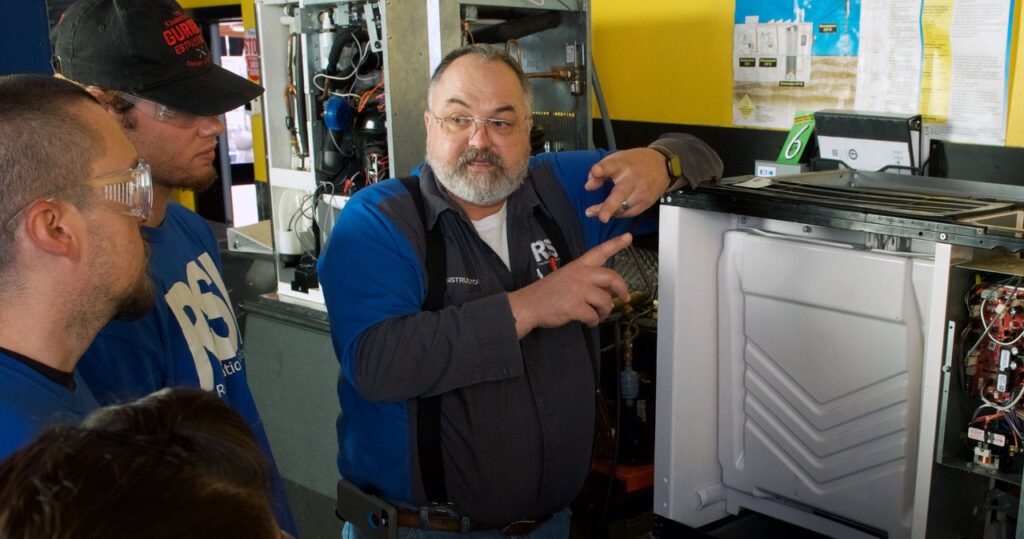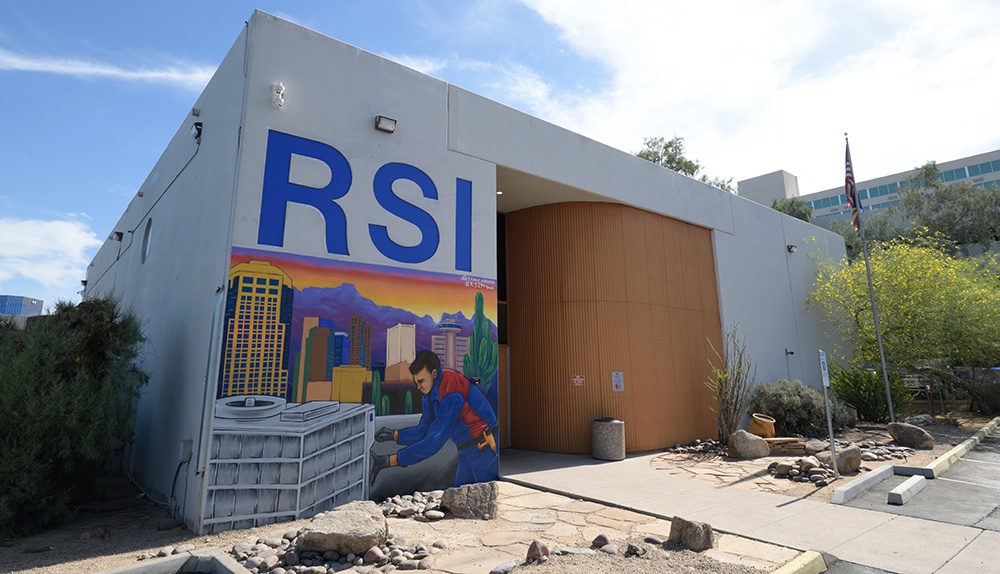RSI is a Great Training Option for Everyone
Learn more about how we can prepare you to advance your career.
A Building Automation System (BAS) is a centralized control system that manages a facility’s mechanical and electrical equipment. In commercial and industrial buildings, a BAS connects HVAC, lighting, security, fire safety, and other systems into a unified network. Operators use the BAS to maintain comfort, manage energy use, and adapt building operations to meet evolving industry standards and future efficiency demands.
A properly configured BAS can reduce operating costs, extend equipment life, and improve building responsiveness to changing occupancy or environmental conditions.
Managing HVAC with Building Automation Systems
Among the many systems connected to a BAS, HVAC is typically the most energy-intensive. Controlling HVAC equipment effectively requires constant monitoring of indoor and outdoor conditions, system pressures, temperatures, and occupancy levels. The BAS uses data from sensors placed throughout the building to determine when to adjust temperature setpoints, open dampers, or start and stop fans, compressors, and pumps.
This process depends on a sequence of operations programmed into the BAS. When indoor temperatures exceed a set limit, for example, the BAS may engage a cooling sequence that opens chilled water valves, starts air handling units, and modulates airflow to affected zones. If occupancy sensors show no activity in a zone, the system may reduce conditioning in that space until it is needed again.
Some buildings use advanced zoning with multiple temperature sensors and independent dampers to control airflow to specific rooms. The BAS can coordinate these zones to balance comfort and efficiency throughout the building. Adjustments are made continuously based on real-time data from the system.
Get Started on the Path to a New Career
Fill out our form to learn how we can help you change your life.
Understanding the Building Automation System Architecture
A building automation system is built on a layered structure of field devices, controllers, communications, and user interfaces.
Sensors and Actuators
Sensors detect environmental variables such as temperature, humidity, carbon dioxide, or occupancy. Actuators are devices that carry out commands from the system, such as opening valves, closing dampers, or starting motors.
Controllers
Controllers receive input from sensors, apply logical instructions, and send signals to actuators. They may be dedicated to a specific system like HVAC or serve a broader control function for multiple systems.
Communications Network
The BAS relies on communication protocols like BACnet, LonWorks, or Modbus to connect field devices and controllers. These protocols allow components from different manufacturers to work together on the same network.
Operator Interface
Technicians and facility managers use a workstation or web-based dashboard to monitor building conditions, change settings, schedule operations, or respond to alerts. This interface allows for quick adjustments and detailed performance analysis.
This layered architecture ensures flexibility and scalability. As building needs evolve or new systems are added, the BAS can adapt without requiring a complete system replacement.
Why Building Automation Systems Can Improve Efficiency
Building automation systems reduce waste by aligning system operations with actual building use. Without automation, HVAC and lighting systems may operate longer than necessary or in unoccupied spaces. A BAS minimizes this by adjusting runtime and output based on demand.
Energy efficiency benefits include:
- Limiting equipment operation during low-demand hours
- Modulating airflow based on occupancy or CO₂ levels
- Coordinating heating and cooling to prevent overlap
- Reducing peak electricity use by responding to utility rate changes
- Providing detailed performance data for optimization
The BAS can also issue alerts when equipment operates outside expected ranges, allowing for early maintenance before failures occur. This helps reduce unplanned downtime and improves long-term reliability.
Buildings that meet energy performance standards often depend on automation to maintain certifications like LEED or ENERGY STAR. In many cases, the BAS is essential for meeting regulatory benchmarks and achieving sustainability targets.
Training for HVAC Technicians in Building Automation Systems
HVAC Technicians who want to work with building automation systems must understand how HVAC and control systems interact. Building automation systems training focuses on both theory and hands-on skills, including:
- Control system fundamentals
- Wiring and installation of sensors and actuators
- Programming control sequences
- Reading and interpreting schematics
- Network configuration and troubleshooting
- Working with digital control interfaces
Understanding how to diagnose and repair system faults is a non-negotiable aspect of the job. Technicians must be able to trace signals through the control network, verify sensor outputs, and confirm that actuators respond correctly to commands.
The Refrigeration Technologies program at RSI includes training in HVAC and electrical systems, which helps prepare students for work involving building automation. Graduates may be ready for entry-level roles such as HVAC controls installer, building systems technician, or facility maintenance technician.
These roles are common in commercial buildings, hospitals, universities, and data centers—facilities where uptime, efficiency, and occupant comfort are top priorities.
Building a Career in BAS with Training from RSI
Training in HVAC and control systems at RSI can lead to career opportunities in building automation. Technicians who understand BAS technology may install, maintain, and troubleshoot control systems in commercial buildings, hospitals, and industrial facilities. As automation becomes standard in modern infrastructure, employers seek skilled workers who can manage BAS functions that support energy efficiency and reliable system performance. This foundation also opens pathways into roles in facility operations, energy management, and systems integration.
To learn more about enrollment opportunities and the potential next step in your career, contact RSI or call 1-855-935-0486 today.




